Ever feel like we missed out on the coolest part of Earth’s history—like, the giant-clawed, spike-tailed, what-the-heck-is-that part? Good news: not everything ancient went extinct with the dinosaurs. Some creatures took one look at evolution and said, “Nah, I’m good,” and just kept doing their thing… for millions of years.
From deep-sea monsters that haven’t changed since Pangaea broke up, to jungle-dwelling mammals that look like a design error in the best way, these living fossils are still out there—lurking in forests, oceans, and swamps like it’s still the Mesozoic. Most of us are out here struggling to keep a houseplant alive, and meanwhile these beasts have been thriving since Earth was unrecognizable. So if you’ve ever wished you could time-travel back to a wilder world, spoiler: you kind of still can. You just have to know where to look.
1. Goblin Shark – The Night Terror of the Deep

The goblin shark looks like something you’d summon during a cursed séance, but it’s actually just chilling at the bottom of the ocean like a true deep-sea OG. With its weirdly long snout and jaws that unhinge like an alien’s, it hasn’t changed much since its lineage first appeared around 125 million years ago. It dwells in deep, dark waters—usually 3,000 feet down—and rarely comes near the surface unless it’s accidentally hauled up by deep-sea fishing trawlers.
Its snaggle-toothed look isn’t just for shock value—it’s a deadly feeding tool. The jaws can shoot forward in a flash to snatch unsuspecting prey, giving this slow-moving shark a creepy edge. Oceana explains that the goblin shark is a fascinating species that lives in the open ocean from near the surface down to depths of at least 4,265 feet (1,300 m). They’re so rarely seen that they’re basically real-life sea cryptids. Most footage of them looks like glitchy alien footage—and yet, they’re very real, and very unchanged. This isn’t just a shark—it’s a living fossil from the Age of Reptiles. If anything proves nature has a sense of humor and horror, it’s the goblin shark.
2. Coelacanth – The Fish That Ghosted Extinction

Imagine thinking you’re extinct for 66 million years, only to randomly get spotted like, “Hey guys, still here.” That’s the coelacanth, a deep-sea fish with lobed fins and serious dinosaur-era vibes. Scientists thought this prehistoric fish vanished alongside the T. rex until one popped up off the coast of South Africa in 1938 like a fossil doing a comeback tour. The coelacanth isn’t just old—it’s ancient, with a body plan barely changed since the Devonian period. They grow over six feet long, live up to 100 years, and give birth to live young like a true evolutionary wildcard.
According to the Smithsonian Ocean, the first living coelacanth was discovered in 1938 and bears the scientific name Latimeria chalumnae. These deep-sea legends have lifespans longer than we ever expected. They’re incredibly elusive, hanging out at depths that make them nearly impossible to casually observe. Which is probably why they’ve managed to keep such a low profile for so long. Bottom line? They’re the cryptid fish of your marine biology dreams—and they’re very, very real.
3. Shoebill Stork – The Dinosaur That Disguised Itself as a Bird

If a velociraptor and a stork had a love child, it would absolutely be the shoebill. Standing five feet tall with a beak that looks like a medieval battering ram, this bird is giving prehistoric energy on every level. It’s found in the swampy, remote wetlands of East Africa—particularly in South Sudan and Uganda—where it creeps through tall grasses with unsettling calm. And when it strikes? Frogs, eels, and even baby crocodiles don’t stand a chance. What makes the shoebill feel especially ancient isn’t just the look—it’s the vibe. They’re silent, slow-moving, and stare like they know how you die.
Scientists believe they belong to a lineage dating back tens of millions of years, sharing ancestry with other prehistoric birds. Per BirdLife International, shoebills are large, prehistoric-looking birds which haunt freshwater marshes and swamps in East Africa, thus fondly referred to by many as the “king of the marshes”. Locals often call them “whaleheads,” but let’s be honest—they’re low-key swamp dragons. Their call? A rapid bill-clattering sound that sounds like a machine gun. Definitely not your average birdwatching find.
4. Tuatara – The Lizard That Time Forgot
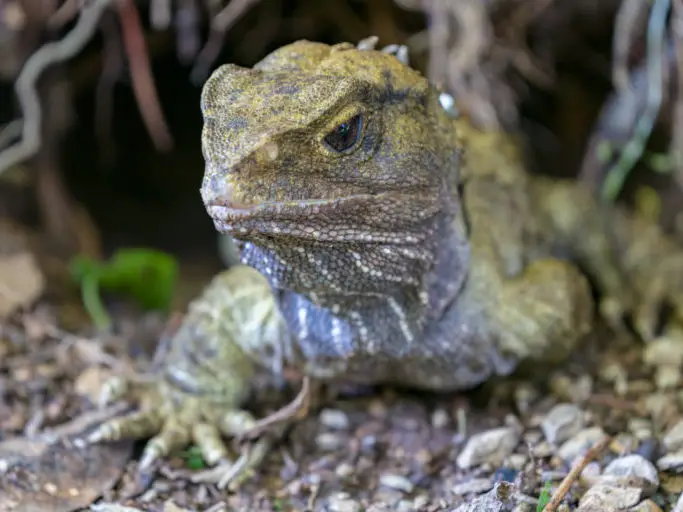
It looks like a lizard, hangs out like a lizard, but biologically? It’s in a class of its own. Meet the tuatara, New Zealand’s one-of-a-kind reptile that split off from other reptiles around 250 million years ago and never looked back. These chill, cold-blooded survivors have a third “parietal” eye on top of their head (because why not) and a metabolism that makes sloths look like sprinters.
Tuatara can live over 100 years, only reproduce every few years, and thrive in cooler temperatures unlike most of their scaly cousins. Their skeleton structure and brain pattern harken back to early diapsid reptiles—basically, they’re the lizard equivalent of a living museum exhibit. Conservation efforts have been key to their survival, since introduced predators nearly wiped them out. In a story by The Guardian, tuataras are described as true “living fossils,” still rocking a body plan that worked when Earth was one giant supercontinent. They’re mostly found on protected offshore islands, living the hermit life like the reclusive legends they are. Honestly? They’re the original slow-living influencers.
5. Chinese Giant Salamander – The Amphibian That Outlived Empires
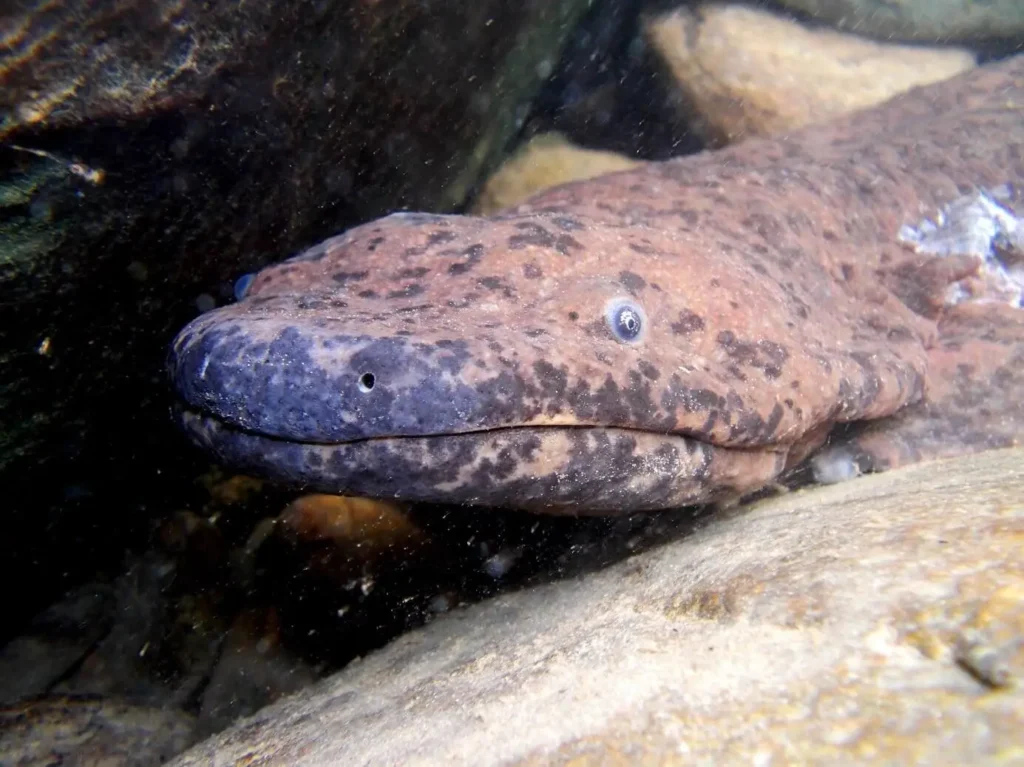
This absolute unit of a salamander can grow nearly six feet long and has barely changed since the Jurassic period. Found in the cold, fast-moving streams of central China, the Chinese giant salamander is the largest amphibian in the world—and definitely the most ancient-looking. It’s got a broad head, tiny eyes, and a wrinkly body that looks like someone tried to sculpt a lizard out of mashed potatoes. But don’t let the looks fool you—it’s a master of stealth and patience. It hunts at night using water vibrations to detect prey, relying more on sensory input than eyesight. Sadly, its numbers have plummeted due to habitat destruction and illegal poaching for the luxury food trade. Conservationists are now racing to save genetically distinct wild populations.
According to the San Diego Zoo, despite its “giant” status, this salamander is now critically endangered due to over-harvesting for human consumption, as well as habitat loss and water pollution. These creatures are true relics—living links to an Earth that looked nothing like today’s. They’re like ancient river spirits, except very real and very endangered. Catch one (with your eyes, not your hands), and you’re looking at amphibian royalty.
6. Horseshoe Crab

If you’ve ever walked a beach and seen what looks like a medieval helmet crawling through the surf, congrats—you’ve spotted a horseshoe crab. These armored oddballs have been marching along Earth’s coastlines for over 450 million years. That’s older than the dinosaurs, older than trees, and definitely older than your dad’s “vintage” concert tees.
Despite their name, they’re not actually crabs—they’re more closely related to spiders. Horseshoe crabs haven’t changed much because they haven’t had to—they’re nature’s ultimate minimalist. They’ve got blue blood that’s wildly valuable in medical research (seriously, pharmaceutical labs use it to test for contamination), which has led to some overharvesting drama. Still, you’ll find them scuttling across sandy flats during full moons like tiny, ancient moon worshippers. They lay thousands of eggs in the surf, fueling entire ecosystems. They’re like the grandparents of the ocean—quiet, dependable, and way tougher than they look. Be kind if you see one; they’ve seen some stuff.
7. Alligator Snapping Turtle

This is not your average pond turtle. The alligator snapping turtle looks like it crawled straight out of the Cretaceous, dragging a chunk of the Earth’s core with it. Its spiky shell, beak-like mouth, and dinosaur tail all scream “do not touch.” Found in the freshwater rivers and lakes of the southeastern U.S., this turtle can grow over 200 pounds—and yes, it bites.
They’re ambush predators who sit motionless on the riverbed with their mouths open, using a little worm-like tongue to lure in fish. It’s basically the laziest and most metal hunting strategy ever. Despite their intimidating look, they’ve been struggling due to habitat loss and illegal harvesting. They’re slow to grow, slow to reproduce, and slow to forgive, probably. Think of them as nature’s spiky old men—grumpy, ancient, and surprisingly clever. If you ever lock eyes with one underwater, back away slowly. It’s not bluffing.
8. Komodo Dragon
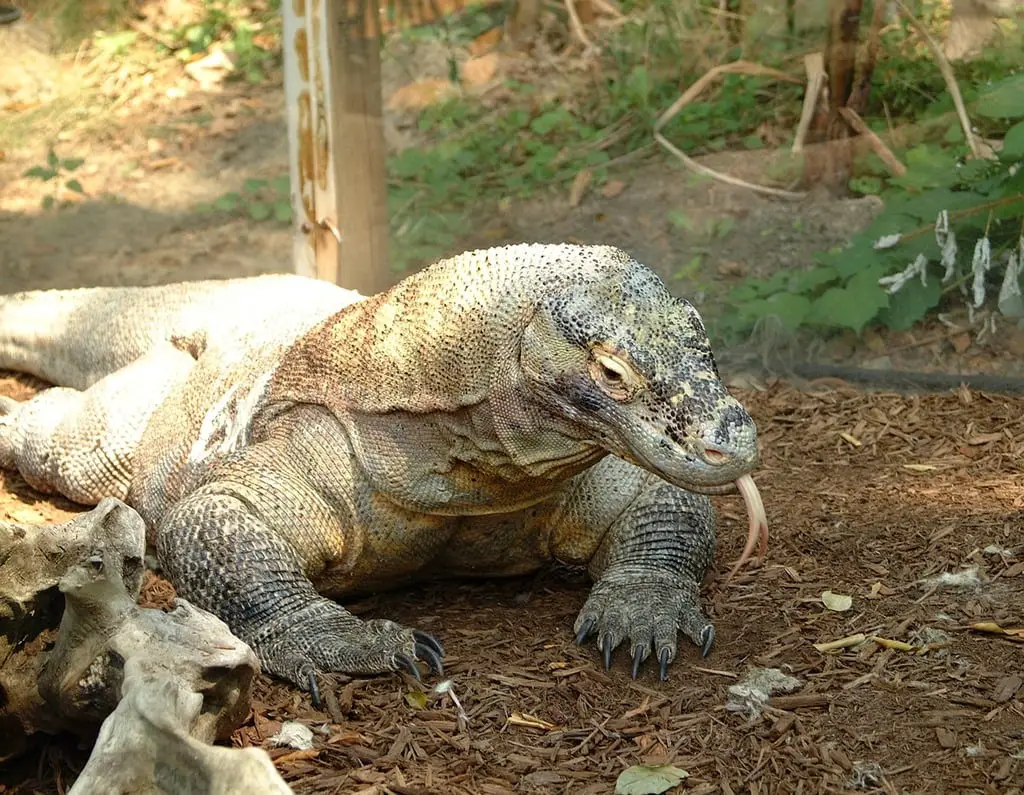
If you thought dinosaurs were extinct, the Komodo dragon would like a word. These massive lizards—sometimes over 10 feet long—roam Indonesia’s Komodo Islands like scaly apex legends. They’ve been around for millions of years, and honestly, they act like it. They don’t run—they stride. They don’t bite once—they infect, using venom-laced saliva that slows down their prey before finishing the job.
These guys can eat deer, goats, and occasionally each other. Their hunting style is “bite and wait”—which is both terrifying and deeply patient. While they’re protected now, tourism and habitat shrinkage have made their future uncertain. But for now, they’re very much alive, very much dominant, and very much not to be messed with. If dragons were real, this would be their most grounded, dead-eyed cousin. And yes—they’ll 100% stare you down without blinking.
9. Saola
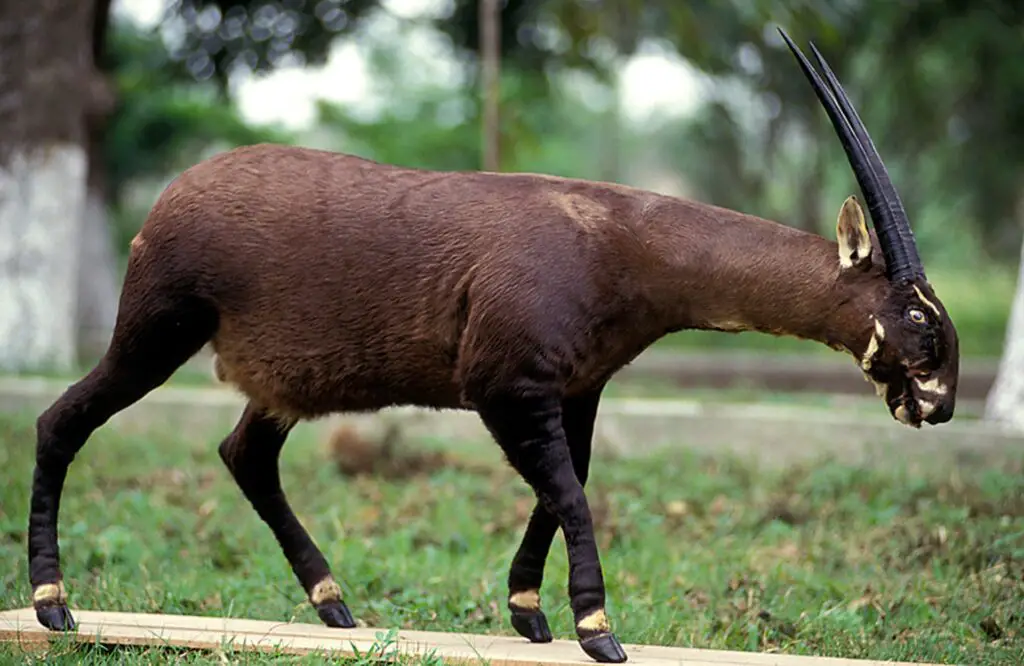
Nicknamed the “Asian unicorn,” the saola is so rare it was only officially discovered in 1992, but its lineage is ancient. Found in the remote Annamite Mountains between Laos and Vietnam, this elusive beast has barely been photographed in the wild. It looks like a mix between an antelope and a deer, with two long, elegant horns and a vibe that says “mythical forest spirit.”
Despite its gentle look, it’s tough as nails, surviving in rugged terrain that’s nearly impossible for humans to reach. Its evolutionary history goes back millions of years, making it a relict species that once had cousins across the region. But with poaching and deforestation creeping in, its days could be numbered. Scientists are scrambling to study and protect it before it disappears like a ghost. Locals have always considered it special, and they’re not wrong. It’s one of the rarest mammals alive today—and easily the most mysterious. If Bigfoot had a forest friend, it’d be this guy.
10. Bactrian Camel
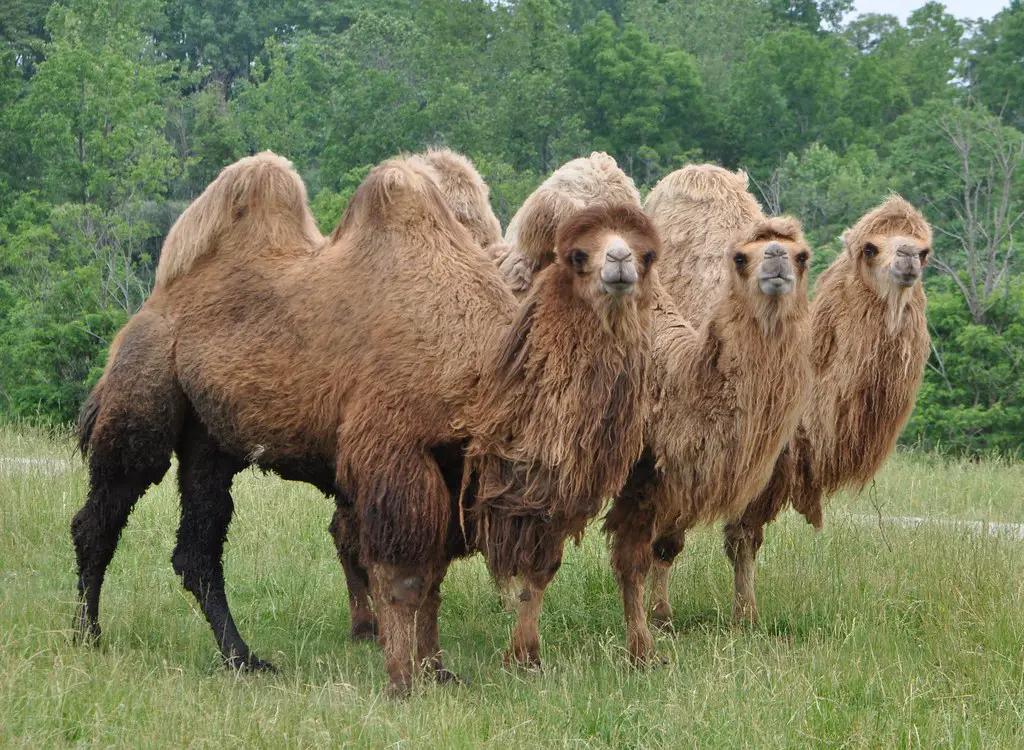
Forget your standard desert camel—meet the two-humped Bactrian camel, a hardy beast that’s been trudging across Central Asia since the Ice Age. These guys are built different: thick fur, extra fat storage, and the ability to survive -40°F winters and scorching summer highs. Wild Bactrian camels, not to be confused with their domesticated cousins, still roam remote parts of the Gobi Desert—and they’re critically endangered.
They’ve evolved to drink salty, even toxic water that no other mammal can handle, which is kind of the ultimate flex. They also have crazy nostrils that seal against sandstorms and eyelashes longer than your favorite influencer. While their lineage dates back millions of years, their wild populations are now down to just a few hundred. Despite their tank-like survival skills, habitat encroachment and illegal mining threaten their future. They’re literally the last of their kind in the wild. Think of them as apocalypse camels—quiet, ancient, and still standing tall. Respect the humps.
11. Nautilus

The nautilus is basically a living seashell that time forgot. It’s been drifting through the deep oceans for over 500 million years, using jet propulsion before it was cool. With its spiral shell and tentacled body, it looks like something from an alien reef—and it kind of is. Unlike its cephalopod cousins (squid, octopus), the nautilus has barely changed since before dinosaurs roamed.
They live deep, move slow, and survive by scavenging whatever the ocean gives them. Their secret to longevity? Simplicity. No flashy color changes, no ink bombs—just solid design and low-stress vibes. They’re the sea’s slow, introverted architects, carrying their past on their back—literally. Unfortunately, overfishing for their pretty shells has made them more threatened than people realize. They’re proof that you don’t need to evolve fast when you’ve already won the game.
12. Okapi

The okapi looks like someone tried to design a zebra in the dark, then gave up halfway through. With its chocolate-brown body, striped legs, and deer-like head, it’s hard to believe it’s real—until you remember it’s related to the giraffe. This forest-dwelling throwback lives deep in the Ituri rainforest of the Democratic Republic of Congo and wasn’t even known to Western science until the early 1900s.
Its lineage dates back tens of millions of years, making it one of the oldest surviving relatives of the giraffe family. The okapi has a long, prehensile tongue (yes, like a giraffe) and moves silently through dense jungle like a woodland ninja. Its ancient survival strategy? Stay weird, stay hidden. Poaching and deforestation have put pressure on okapi populations, but conservationists are working to protect this quietly majestic species. They’re low-key fabulous and secretly ancient. Basically, they’re rainforest royalty—and they know it.
13. Arowana (Dragon Fish)

You know those long, sleek fish that seem too fancy for their own good? That’s the arowana. Native to South America and Southeast Asia, these surface-skimming predators have been around since the Jurassic period. They glide through water like silver knives and can jump out of it to snag prey from low branches—birds, insects, you name it.
They’re often called “dragon fish” because of their scales, mustache-like barbels, and generally mythical aesthetic. In some cultures, they’re symbols of prosperity and luck—but their actual survival skills are the real magic. Their jaw structure and hunting style haven’t changed in millions of years because, well, they didn’t need to. Unfortunately, their beauty has made them popular in the aquarium trade, sometimes fetching tens of thousands of dollars per fish. Wild populations are declining, and illegal poaching is a big issue. Still, the arowana remains one of the most badass, ancient predators that didn’t get the dino memo. Sleek, silent, and seriously old-school.
14. Amami Rabbit
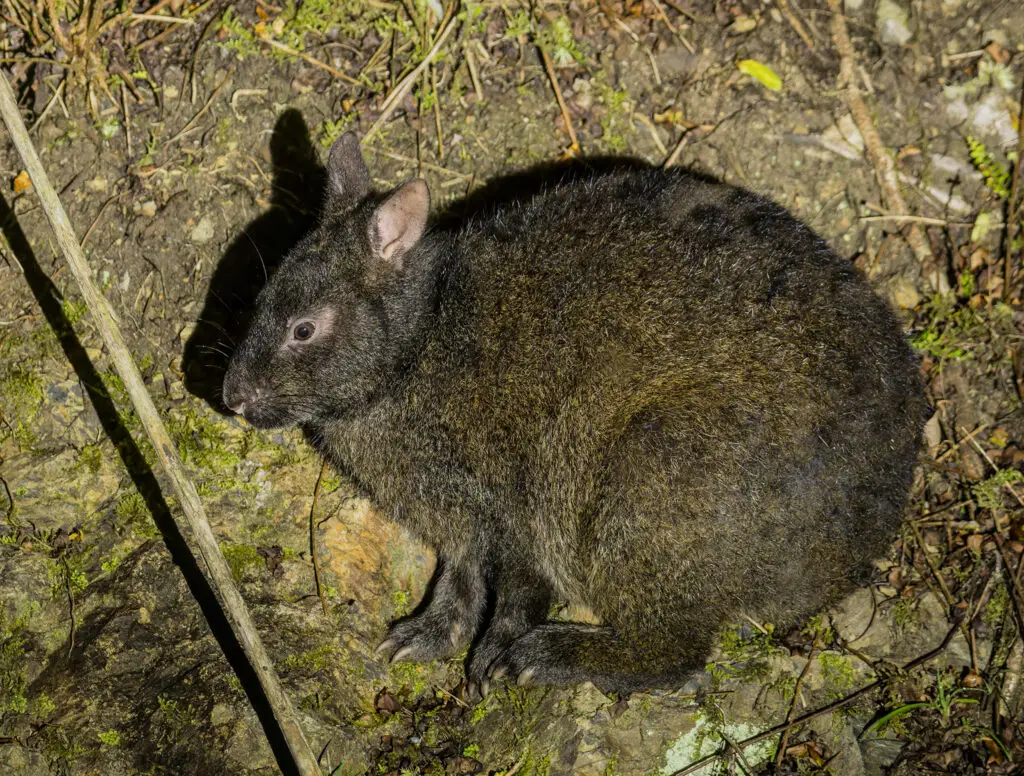
Last but definitely not least: the Amami rabbit, a fluffy little beast that’s basically the punk rock cousin of your average bunny. Native only to a couple of remote Japanese islands, this ancient rabbit species is stocky, dark-furred, and has short ears—nothing like its modern relatives. It’s thought to be a living descendant of rabbits from 10 million years ago, when they were built for dense forests, not fields of clover.
The Amami rabbit is nocturnal, elusive, and, for a while, thought to be extinct. But it’s still here, sneaking around subtropical forests like it’s got secrets to keep. Its behaviors are more primitive than modern rabbits—it digs elaborate burrows and emits low growls when threatened. It doesn’t hop cutely; it lumbers with purpose. Deforestation and invasive species have put it at risk, but conservation programs are working hard to keep it safe. If rabbits had a prehistoric goth phase… this is it.
